The Top Sailboat Manufacturers (According to Sailors)
Whether you are buying or chartering a boat, or whether you simply want to stay informed, you might be asking the question: who are the top sailboat manufacturers? As is the case with most 'who's the best' questions, the answer isn't simple. So this article takes a stroll among the crowds and asks - “who's your favorite?”.
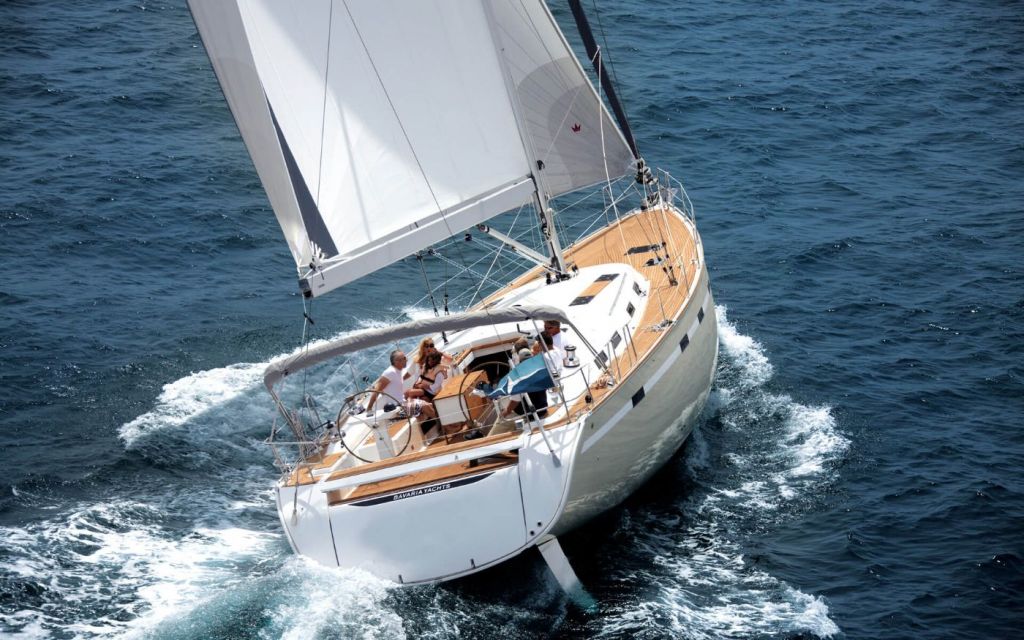
What are the top sailboat manufacturers?
This is the ultimate all-star list. Now let’s see why.
First of all - I want to make this lineup relatively short. There are tens of names that bounce around when you ask about favorite manufacturers, and if I had made this a long list, in the end, it wouldn’t represent the famous all-stars that really stand out in the eyes of the people. If you want a longer, less detailed list, check out our article about 50 popular sailboat brands. This time though, we are looking only at the manufacturer champions of the ‘popular choice’ contest.
“This is a loaded question!”, the internet forums yell, “there are thousands of options!”, they cry, enraged, “it’s not about the boat, but about the crew!” they scream. But we don’t give up and continue, determined to find out who you all like the most.
Cover Image: Bavaria Cruiser 55 - Copyright BavariaYachtbau under CC BY-SA 4.0
Wally
I know, I know, I hear you. Let’s start with the cons of these boats to quench the thirst of the bloodthirsty critics. Yes, Wallys are very costly, they go all the way up to tens of millions of dollars and so won’t be more than a bedroom poster for most of the readers.
That’s about it when it comes to the negatives, though. The reason they made it on this list despite their price tag is that they are pioneers in many aspects. Visually they are beyond gorgeous, and their price allows for exquisite build quality. The cost of these hi-end racer/cruisers means they aren’t particularly user friendly since most users won’t be able to use them, but just as Rolls Royce belongs on the list of the best cars, Wally belongs on the list of the best boats. They are the brainchild of Luca Bassani, founder and chief of the brand, a stylish Italian man who knows what’s right.
And it is this poster worthiness that gained them popularity among the crowds. A video of a simple Atlantic crossing on a 100 foot Wally has millions of views not necessarily because that particular journey would be exciting, in fact, it is quite an uneventful one, but because it is on a boat that makes the design junkies salivate. The Wally designs alone were the reason these boats made it into Hollywood feature films and series, and if you look at one, you’ll understand why. This is what happens when extravaganza meets good taste and has all the money in the world to realize the idea.
What do they make in terms of sailboats? Superyachts around 100 ft long, each focused on sporty cruising, design, and comfort. They only make custom sailboats, no factory models here. Buying a used one is a safe situation, they hold up even after a long time both in terms of quality, performance as well as design. During their existence, Wally only made a handful of boats, so if you ever stumble upon one, take a selfie. It is like meeting a celebrity.
Catalina
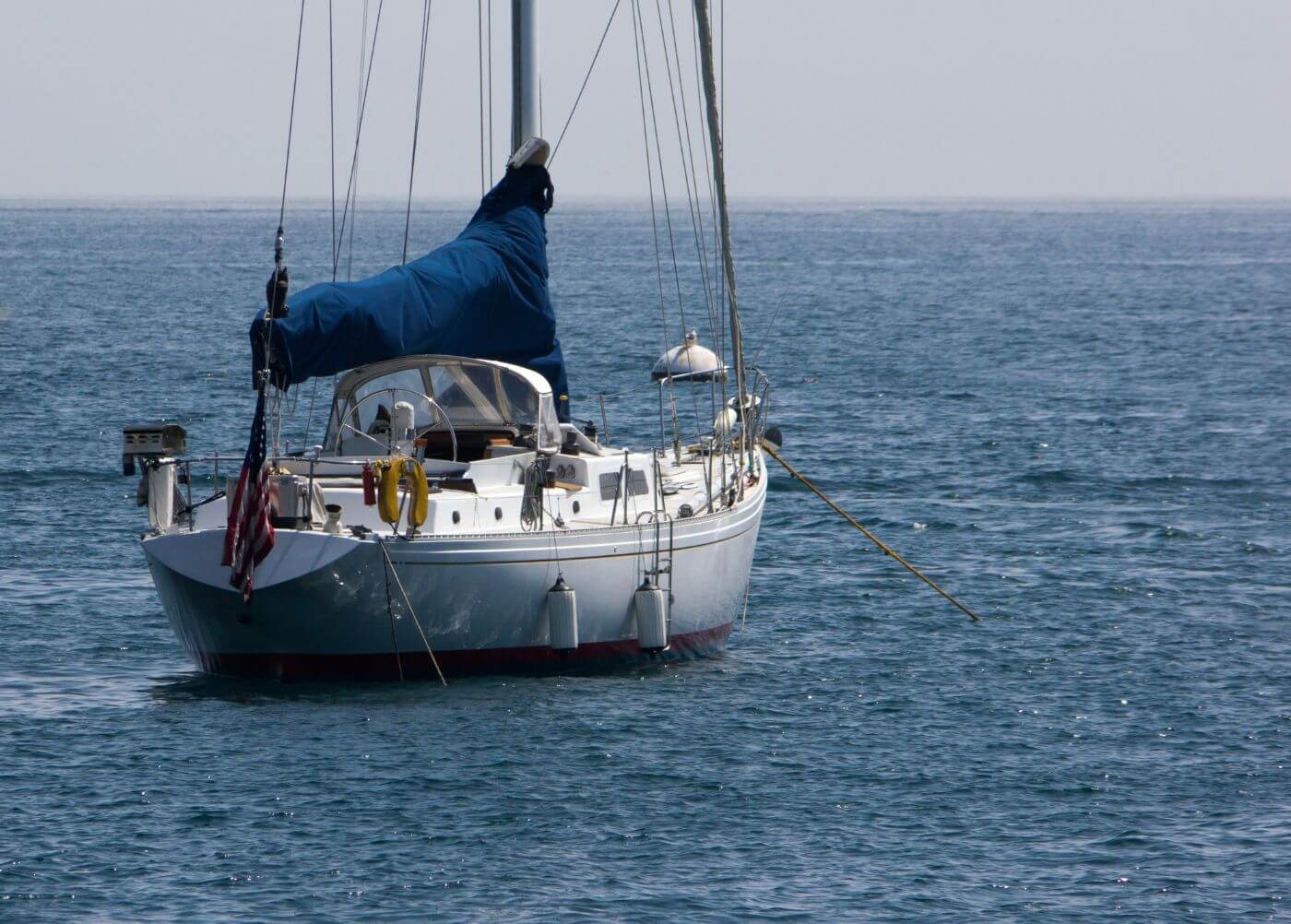
To level the scales, let’s now jump at the opposite side of the spectrum and have a look at Catalina, the people pleaser. If Wally was the Rolls Royce of the boating world, Catalina is the Ford, making, as they say, “honest, sturdy boats that hold up to real-world conditions, perform well and cost less to maintain”. The mission of this company then seems to be to make boats as practical as possible for the common folk. That means: a practical interior layout, practical handling, and last but definitely not least, a practical price.
And this strategy has worked out well - according to experiences of hundreds of thousands of sailors, Catalinas stand up to their reputation of a boat that’s got your back. It is one of the largest boat producers in the world, with over sixty thousand of its boats sailing the world. Boat manufacturers oftentimes go through quite a lot of rough patches, that turn into bankruptcy for many, it isn’t an easy business to be in, but Catalina has been on a roll for decades. And this success has come with its perks - the business stability allowed for some impressive manufacturing facilities, which helps mass production, which in turn helps drive the price down. So with Catalina, you’ll likely be getting more bang for your buck than from their competition.
They make boats ranging from tiny daysailers all the way to 50-foot seaworthy vessels. What made them the most famous though are their mid-sized cruisers - the staple of the classical American sailing fan. Whether you like it or not, slow and steady is the name of the game when it comes to mainstream, and that is precisely what Catalina understands so well. They don’t take large risks. Their models are long-running with slight tweaks and facelifts, concepts that don’t surprise or insult, but offer stability. This conservativeness has been what some sailors hold against Catalinas, which is easy to understand when looking at many other brands that offer more in terms of fanciness, but this is the Catalina way, and it has worked out splendidly for them.
The long years of experience make for a great manufacturer that makes boats which won’t be the fastest, won’t be the prettiest or the boldest in terms of design or technological innovation, but they will do precisely what they are made to do - their job.
Bavaria
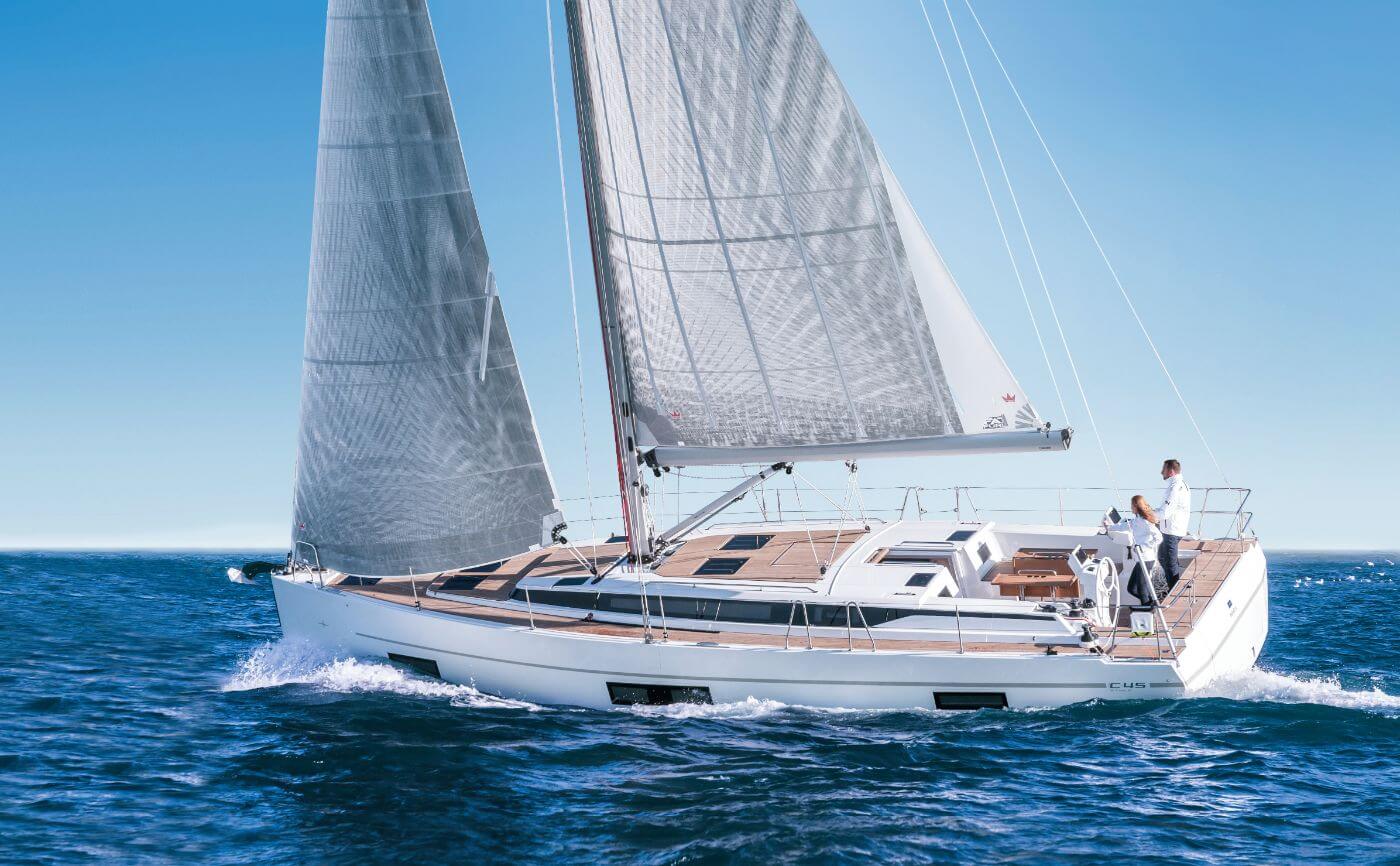
Bavaria is to Europe what Catalina is to the United States. Affordable, practical, nothing special, but does what it’s supposed to. It is the main diet of many Mediterranean sailors. To stay with the cars equivalent, just because I like it so much, if Catalinas were the Ford, Bavarias would be the Volkswagen. They are generally cheaper than Catalinas but don’t see that as an indicator, sailors can’t seem to find one or the other significantly worse or better in build quality. There are of course a few voices rooting for one or the other, but that can be assigned to fandom rather than to actual benefits. The price difference is there partly due to a different manufacturing process, the Bavaria factories are more efficient (they are German after all), and the production is more streamlined, allowing cutting costs without cutting corners.
Reliability, ease of use, and affordability are aspects that lead the design decisions here - which is what makes them so prevalent in charter companies. Even a nonexperienced sailor can get on a Bavaria and operate it with relative ease. But as I’ve been told by the boss of an unnamed charter company, after five or so years, you will start to feel the lower price tag as their reliability starts to go down unless money is put into repairs. With an older Bavaria, you will feel its age more than with other manufacturers. As one owner puts it, they tend to get “quite exhausted”.
So in case you belong among the Bavaria fans and have your eye on a used one, keep the above sentences in mind and when shopping, make sure you understand the ‘health’ of the boat in question. Moreover, be aware of the difference between a boat that was used by a handful of sailors over the years versus one that was chartered to more people than you could count. In other words, you wouldn’t want to buy a few-year-old rental car because who knows what the poor thing had to suffer, - especially since you can bet that many of the clients weren’t particularly good sailors due to generous sailing license policies in Croatia, which allows virtually anybody to ‘become a sailor’ within hours for a friendly fee.
What can you expect when you get on one? Good things - the manufacturers know what their products are used for, and that is why Bavarias are designed as easy comfortable cruisers. Everything you need to have within reach will be within reach, to the point of you having something to hold on almost all the time wherever you go through the boat - Bavaria knows well that many of its users won’t have their ‘sea legs’ and act accordingly. Even smaller models have generous amounts of space because it is the smaller models that are charter kings - Bavaria gives a lot of attention to them. The layouts will be comfy, so Bavarias make good boats for longer voyages - pair that with reliability and price and you will understand why the vox populi speaks so fondly of them.
Groupe Beneteau
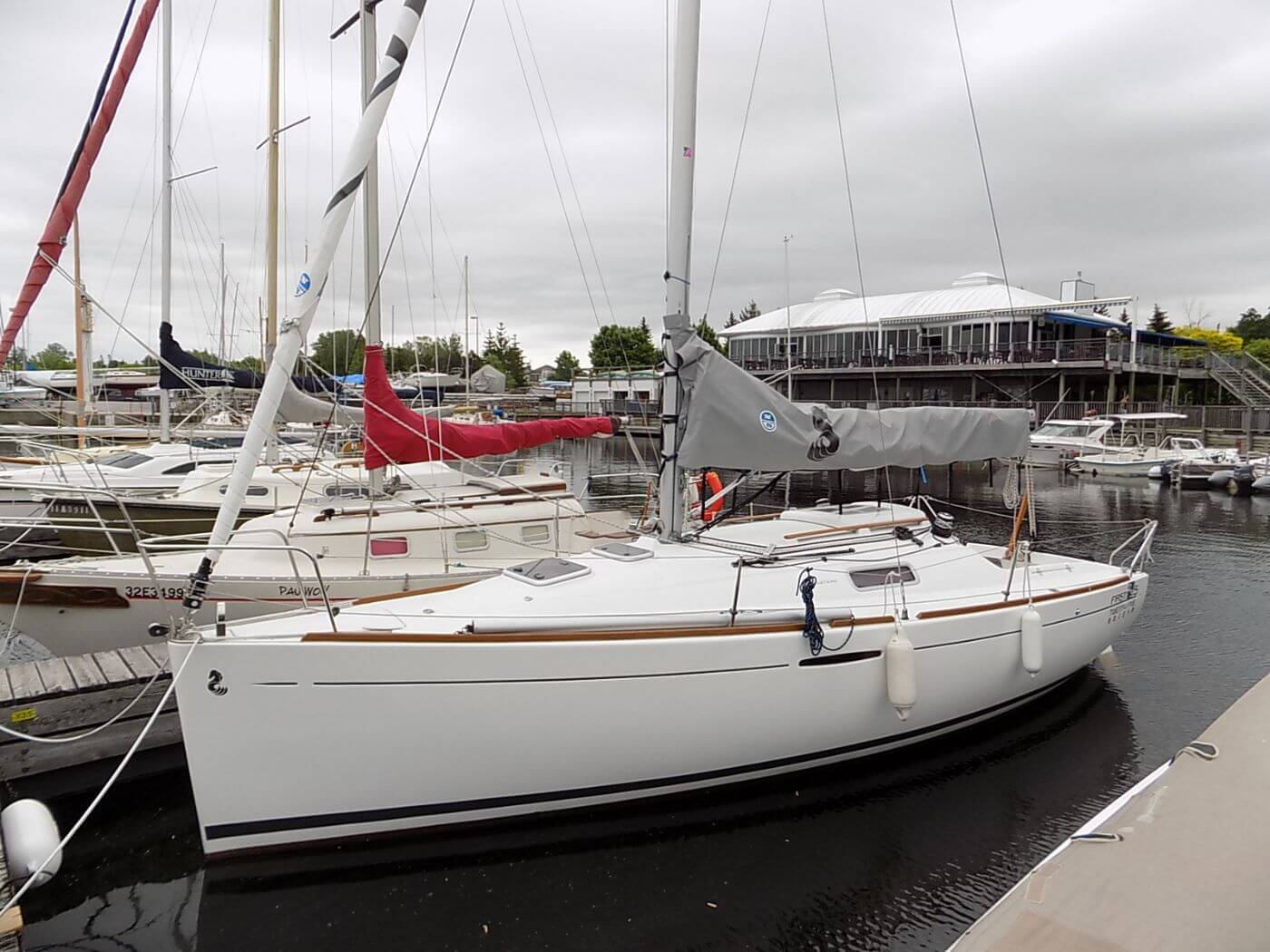
The reason I am mentioning the name of the parent company here is that they own both Beneteau and Jeanneau, brands that are distinguishable on the surface, but if you look close enough, you will find them pretty similar, down to the fact that they are produced in the same factory. So since both Beneteau and Jeanneau are very popular sailor’s choices, both deserve a place on this list, but dedicating a subchapter to each would feel like making a duplicate.
By the way, Groupe Beneteau also owns Lagoon, a renowned catamaran maker, Prestige, luxury yacht manufacturer, Monte Carlo Yachts, CNB Yacht builder, the semi-custom sailboat maker, Four Winns, Glastron, Scarab, Wellcraft, Excess, and Delphia… some of these make motor yachts only, but if you combine fans of all of these, you get a sizable crowd. This company has figured out what people of various tastes want and serves quite a few of these niches.
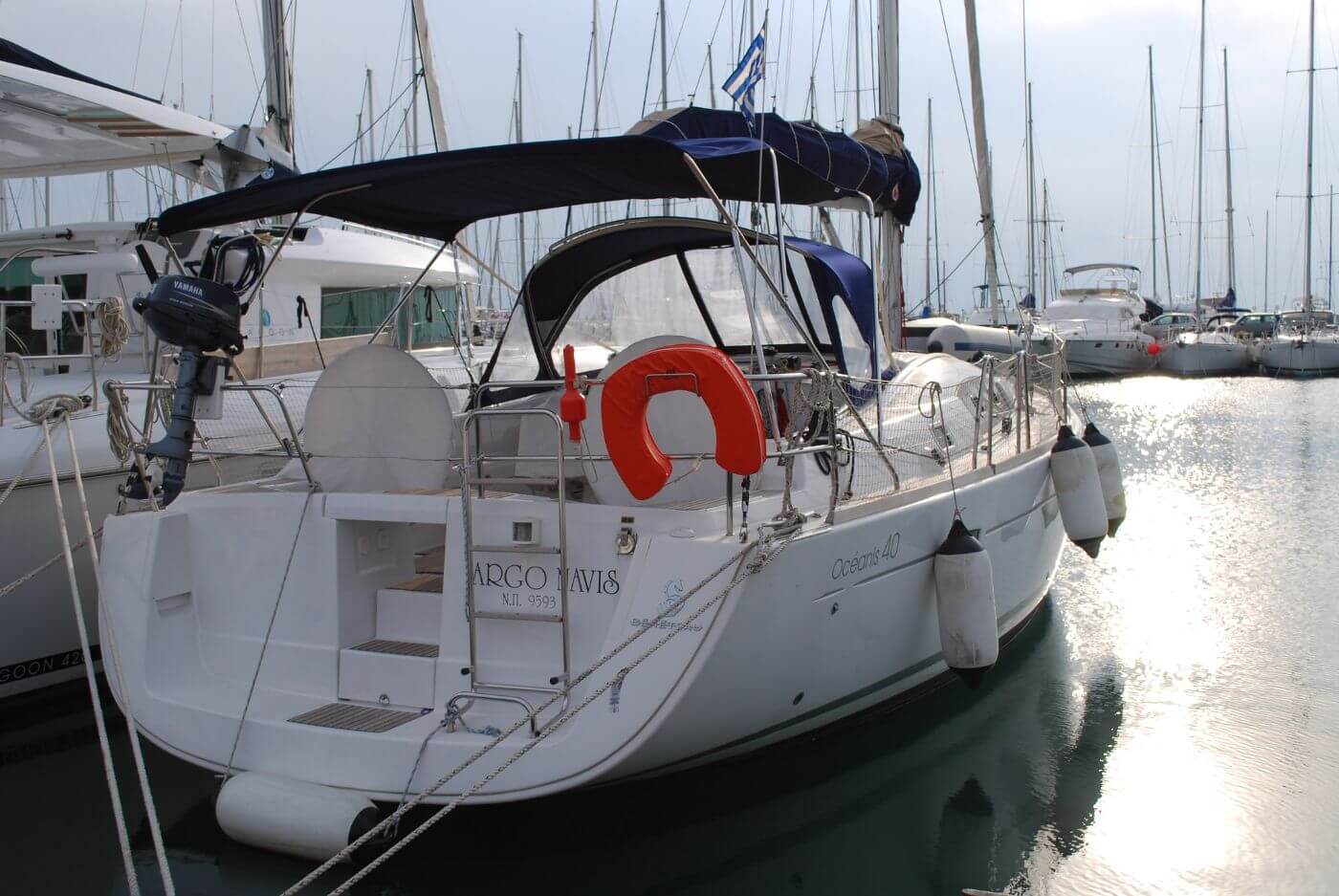
Business aside, let’s see how this French company managed to find its way into the hearts of so many. Well, first of all, they are French. So chic style is to be expected. And with this, fans come. Image wise (and design-wise to a bit) Jeanneau is the sporty one that sails better, while Beneteau aims at the family comfort market. But on both, you will feel loved by the designer. They are made to make you feel good when you use them, and they’ll spoil you with luxury that fits within the specific price tag.
Comfort is a big deal here. On Jeanneaus for instance, you will sometimes find quite unique layouts, often different from the traditional ones, to really pamper the sailors - such as their two master bedroom setup, with the stern one being under the cockpit. A lot of them come with the 360 docking system, which allows you to move the boat around with a joystick and makes maneuvering in marinas so easy you feel like you are cheating. Or consider their decision to make the hull finer to cut through the water better, resulting in less movement - something that helps with comfort. All of this comes for a price but less so than you would expect since the buying power of the enormous Groupe Beneteau helps with shaving off dollars where smaller manufacturers couldn’t. This is, for instance, the reason why they can afford to use wood on their crafts to an extent you wouldn’t expect from a production boat for that price - again, buying volume allows for this even without you necessarily having to pay the expected premium.
Of course, you will mostly find them in Europe, where they are plentiful in marinas, though the aforementioned Bavarias dominate as far as numbers go. But that is mostly because of charters, since last year, over 80 percent of chartered boats were Bavarias. As personal boats, products of Groupe Beneteau belong among the top choices.
Cal Yachts
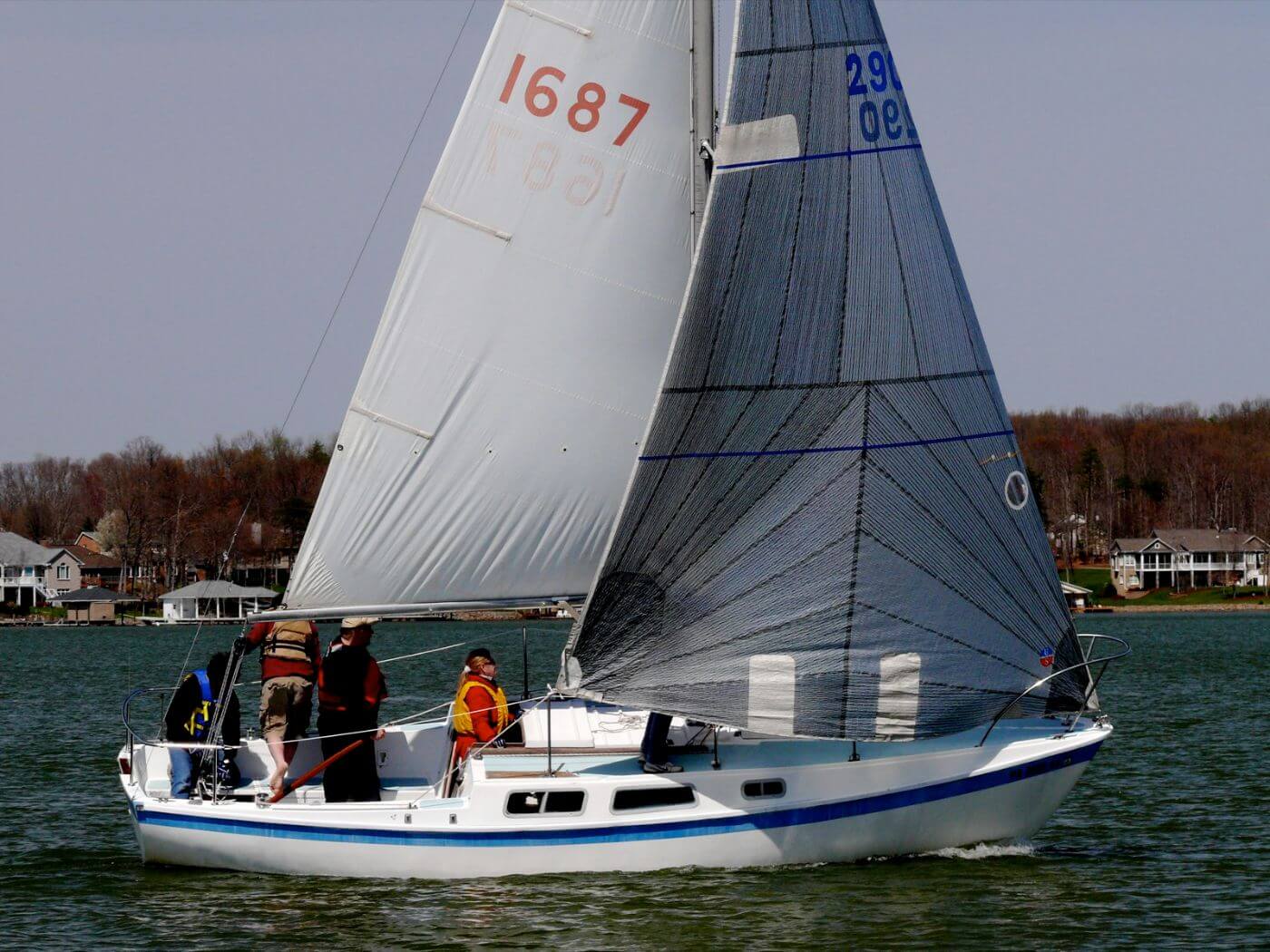
Now, this is a bit of a tricky one. The manufacturer doesn’t exist anymore, in fact, it produced boats from 1960 to 1989, making it over thirty years old, but despite that, the Cal models are still a favorite and worthy member of the cruising as well as performance world.
During the company’s existence, almost twenty thousand boats were built, partially because they were one of the first brands to mass-produce fiberglass sailboats. That, along with Cal models winning impressively in races, helped them to make a name for themselves, a name that still sounds to this day.
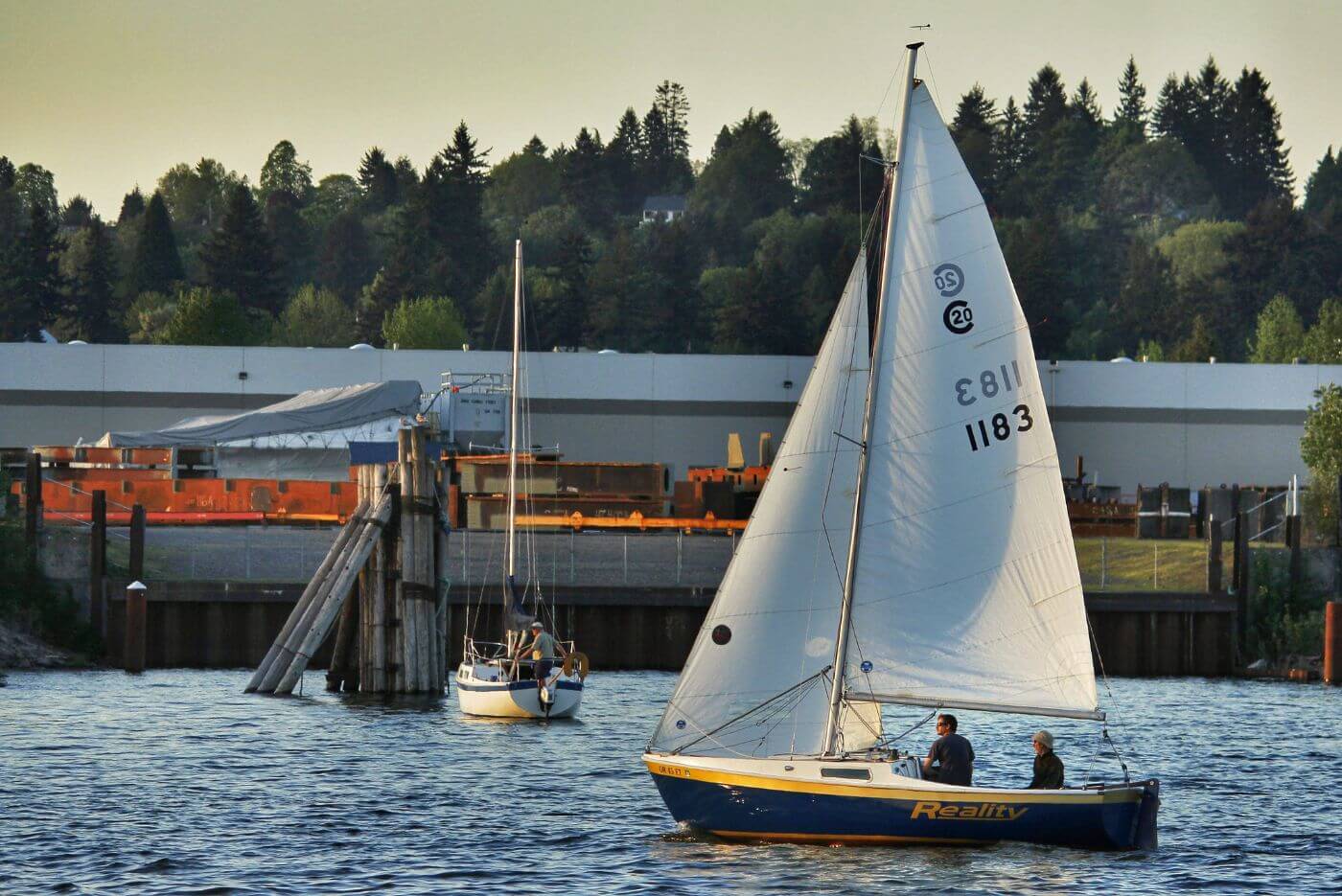
Why is it on this list? Partially because of its prevalence on the seas, partially because of its prevalence in internet forums and pub talks. Cal sailboats are loved by their owners mostly for their responsiveness when under sail, good build quality, (even though many say the interior could have been done way better) as well as reliability even after long years of use. Many of the design features have indeed been improved since, so if thirty years ago you could dominate races with Cals, today you won’t be on the lightest and most up to date boat around anymore. But you won’t be sailing a cruiser either. The boat might not be a pureblood racer, but it was built with racing in mind. Which might give the more sporty ones of your peace of mind that no Bavaria or any traditional cruiser will provide.
Quite a few owners say though that the success from the sixties gained Cal a name that you will pay for when buying one. If you are one of those who want to make sure they are paying for physical value rather than reputation, this might be a dealbreaker for you. There is a certain portion of slight arrogance that comes with racing success, one that shows in later models. But given the brand’s popularity, this is not too big of a deal.
So if cruising is your goal, if long crossings are what you desire, if you simply want a boat that was built with honesty and can take you basically anywhere you want, Cals are a safe bet. You’ll be joining a big, happy and an old family. And an affordable one at that.
In conclusion
To sum it all up, it seems that practicality, affordability, and reliability are the main factors that influence whether a sailboat manufacturer will become popular among sailors or not. As well as extravagant design and beauty, but that’s another story.
There have been many shipyards throughout the ages, some long-lasting, some surviving but a couple of years. Each tried to come up with an angle to sell well. Sometimes it was quirky design, and sometimes it was an intriguing feature, sometimes it was the use of new technology. Sometimes it worked out quite well, other times it did not. But in the end what sailors seem to want is a boat that will not fail them when they need it the most, a boat that is well built enough to cross oceans, because that gives one a sense of freedom and a boat that is built with the user-friendliness in mind. Simply, a boat that is your good friend.
A road to a sailor’s heart is simple, after all.
Did you find the answer to your specific question?
👍 3 👎 4
Comments
Daniel O'Connell
Matej,
Really good article. I was enlightened.
Thank you,
Dan O’Connell
Leave a comment